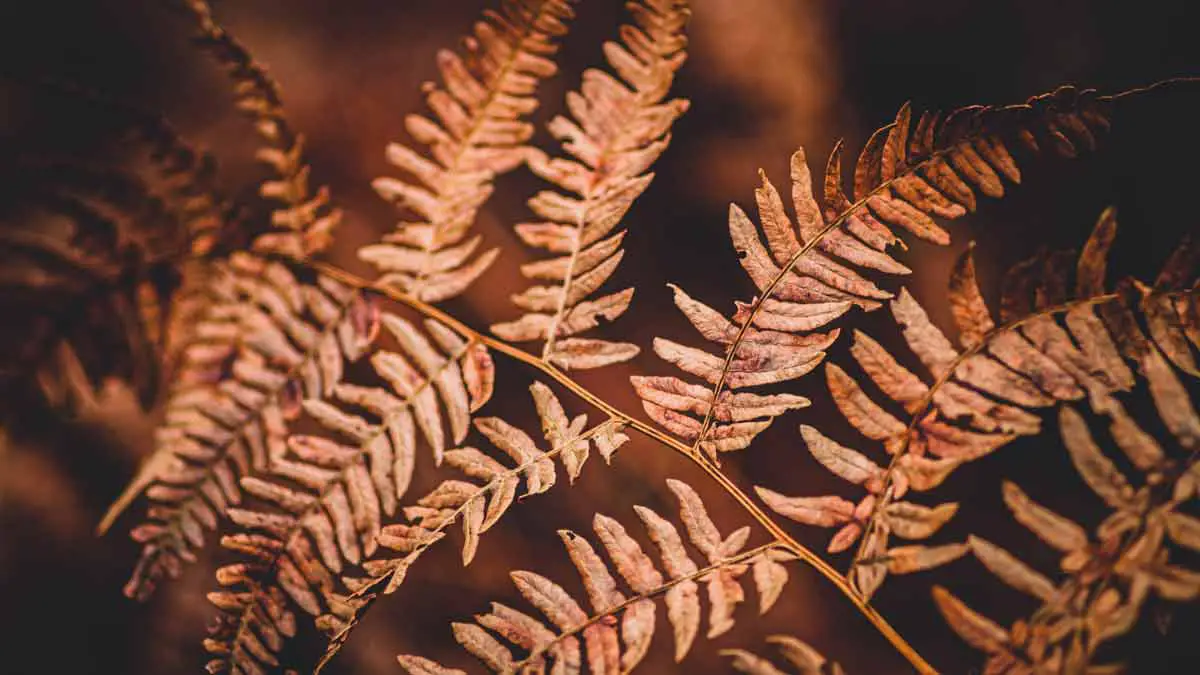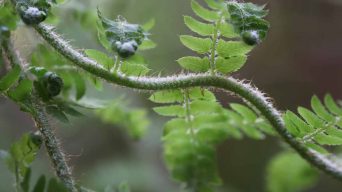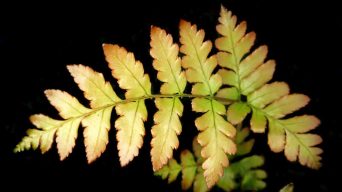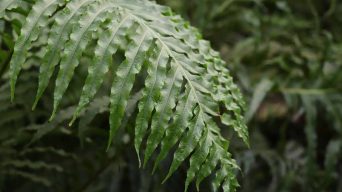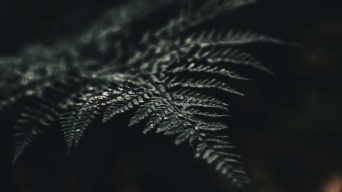Fern plants are known for their beautiful, lush foliage. But what do you do when you notice your fern leaves turning brown?
Before panicking, it’s essential to understand that there are several reasons why fern leaves may turn brown. In most cases, the problem is relatively easy to fix.
This article will explore the most common reasons for fern leaves turning brown and provide tips on how to solve the problem.
Why Do Fern Leaves Turn Brown and What Can You Do About It
Ferns are lovely, low-maintenance plants that can add a touch of elegance to any home. But sometimes, fern leaves turn brown, which can be pretty disheartening.
There are several reasons why ferns’ leaves may turn brown, but the good news is that most of these problems are relatively easy to fix.
Here are 10 possible reasons for fern leaves turning brown, as well as some tips on how to solve the problem:
1. Not Enough Light
Ferns need a lot of indirect light to thrive. If your fern is not getting enough sunlight, its leaves will start to turn brown.
Fern plants are native to tropical rainforests, growing beneath the canopy of taller trees. This means they’re used to getting very little direct and lots of indirect light.
Light is essential for ferns because it helps them to photosynthesize and produce the energy they need to grow.
How To Fix a Brown Fern Caused by Not Enough Light
If you think your fern isn’t getting enough light, the best solution is to move it to a brighter location.
Make sure to do this gradually, as ferns can get sunburned if they’re suddenly exposed to too much direct sunlight.
Start by moving your fern a few inches closer to a window or another source of light. Move it a little closer each week until you find the perfect spot.
The best place for a fern is in an east- or west-facing window where it will get lots of indirect light but won’t be exposed to direct sunlight.
2. Too Much Sunlight
Although ferns need a lot of light, too much sun can cause their leaves to turn brown.
If your fern is getting direct sunlight, its leaves will start to turn brown and develop scorch marks. This is because the sun’s rays are simply too intense for the fern and can damage its leaves.
How To Fix a Brown Fern Leaves Caused by Too Much Sunlight
The best way to fix a fern scorched by the sun is to move it to a shadier location. If possible, place the fern in an area where it will only get indirect sunlight. You can also try placing a sheer curtain over the fern to filter out some of the sun’s rays.
You may need to trim the fern’s brown leaves in extreme cases. This will encourage the fern to grow new, healthy leaves.
3. Too Much Heat
Ferns thrive in cool, moist environments. If your fern is exposed to too much heat, the leaves will start to turn brown and wilt.
They need temperatures between 60-75 degrees Fahrenheit to stay healthy. If the temperature gets too hot, ferns will start to suffer from heat stress.
How To Fix a Brown Fern Leaves Caused by Too Much Heat
If you think your fern is getting too much heat, try moving it to a cooler location in your home. If possible, place the fern in an area with a source of air conditioning or a fan.
You can also try misting your fern regularly to help it stay cool and hydrated. Just be sure not to overdo it, as too much water can also cause fern leaves to turn brown (more on that later).
4. Not Enough Humidity
Ferns are native to tropical rainforests where the air is thick with humidity. This means that they prefer environments with high humidity levels.
When ferns are grown as indoor plants, they often struggle to get enough humidity. This can cause their leaves to turn brown and crisp.
How To Fix a Brown Fern Leaves Caused by Not Enough Humidity
The best way to solve this problem is to increase the humidity around your fern. One easy way to do this is to place the fern on a pebble tray.
A pebble tray is a shallow tray filled with small stones or pebbles. You then add water to the tray to partially submerge the stones.
As the water evaporates, it will increase the humidity around your fern. Just keep an eye on the water level and add more when necessary.
You can also try misting your fern regularly or using a humidifier near the plant.
5. Overwatering
Although ferns like moist environments, too much water can cause their leaves to turn brown and rot. This is because the fern’s roots are susceptible to overwatering and can quickly become waterlogged.
When fern roots are soggy, they cannot get the oxygen they need to survive. This will cause the fern roots to rot, and the fern leaves to brown.
How To Fix Brown Fern Leaves Caused by Overwatering
If you think your fern is being overwatered, the best thing to do is to let the plant dry out completely. This will give the fern’s roots a chance to recover.
Once the fern is dry, you can start watering it again. But be sure to water only when the fern’s potting soil mix is dry to the touch.
It’s also a good idea to repot your fern in a fresh soil. This will help to improve drainage and prevent overwatering in the future.
6. Underwatering
Just as too much water can cause fern leaves to turn brown, not enough water can also have the same effect.
When ferns are underwatered, their leaves will start to turn brown and wilt.
This is because the plant isn’t getting the moisture it needs to stay healthy. The fern will eventually start dehydrating, and the leaves will turn brown and crisp.
How To Fix Brown Fern Leaves Caused by Underwatering
If your fern shows signs of dehydration, the best thing to do is to water it thoroughly. Be sure to water until the fern’s potting mix is evenly moist.
You may also need to water more frequently to keep the fern’s potting mix from drying out.
Ferns must be watered at least once a week and more often during hot weather.
7. Pests
Pests can also cause fern leaves to turn brown. Common fern pests include mealybugs, aphids, scale insects, and spider mites.
Pests can cause several problems for ferns, including leaf browning. They can also cause the plant to become stunted and weakened.
In some cases, pests can even kill ferns.
How To Fix Brown Fern Leaves Caused by Pests
If you have pests on your fern, treating the plant with insecticidal soap or neem oil is best.
You can also try to remove the pests by hand. To do this, wipe the pests off the fern leaves with a damp cloth or cotton swab.
8. Diseases
Ferns can also be affected by diseases, which can cause their leaves to turn brown. Common fern diseases include fusarium wilt, southern blight, and Pythium root rot.
Fungal diseases are the most common type of fern disease. These diseases are often caused by too much moisture or poor drainage.
Bacterial and viral diseases are less common but can also cause fern leaves to turn brown.
How To Fix Brown Fern Leaves Caused by Diseases
If your fern is affected by a disease, the best thing you can do is to try to treat the plant. This will vary depending on the type of disease.
For fungal diseases, you can try treating the plant with a fungicide. Bacterial and viral diseases are more challenging to treat and require professional help.
9. Nutrient Deficiencies
Ferns can also suffer from nutrient deficiencies, which can cause their leaves to turn brown. The most common nutrient deficiency in ferns is nitrogen.
Nitrogen is an essential nutrient for ferns and helps plants produce chlorophyll. Chlorophyll is what gives ferns their green color.
When ferns don’t get enough nitrogen, their leaves will start to turn yellow. This is because the plant isn’t able to produce chlorophyll. As the deficiency worsens, the fern leaves will turn brown and eventually die.
How To Fix Brown Fern Leaves Caused by Nutrient Deficiencies
If you think your fern has a nutrient deficiency, the best thing to do is to fertilize the plant. Be sure to use a balanced fertilizer that contains nitrogen.
You can also try using a fern-specific fertilizer. These fertilizers are designed to provide the nutrients ferns need to stay healthy.
However, it’s essential not to overfertilize ferns. This can cause the plant to suffer from a nutrient burn, and turn fern leaves brown.
10. Improper Fertilization
Fertilizing ferns is essential for their health, but it’s also important not to overdo it. Overfertilizing ferns can lead to a nutrient burn, which can cause the leaves to turn brown.
A nutrient burn occurs when the plant gets too much fertilizer and can’t process it. This causes the plant to suffer from a chemical burn, which can damage the leaves and cause them to turn brown.
How To Fix Brown Fern Leaves Caused by Improper Fertilization
If you think your fern has a nutrient burn, the best thing to do is to flush the potting mix with water. This will help to remove any excess fertilizer from the plant.
After flushing the potting mix, fertilize the fern with a balanced fertilizer. Avoid using too much fertilizer, and don’t fertilize more often than necessary.
Ferns need to be fertilized about once a month during the growing season.
11. Water Quality
The water you use to water your fern plant can also affect the plant’s health. If the water is too hard, it can cause mineral build-up in the potting mix.
This can lead to several problems for ferns, including leaf browning. Hard water can also make it difficult for ferns to absorb nutrients from the potting mix.
How To Fix Brown Fern Leaves Caused by Water Quality
If you think the water you’re using to water your fern is too hard, the best thing to do is to use distilled or filtered water. This will help to remove any minerals from the water.
You can also let tap water sit for 24 hours before using it. This will allow some of the minerals to dissipate into the air.
Final Thoughts
Fern leaves turning brown is a common problem that various factors can cause. However, it is often possible to fix the issue and return your fern to good health.
If you have noticed your fern turning brown, check for common causes such as overwatering, pests, or low humidity. Once you have identified the problem, take steps to correct it. This may involve adjusting your watering schedule, increasing humidity, or treating pests.
You can keep your fern healthy and thriving for many years with care and attention.

